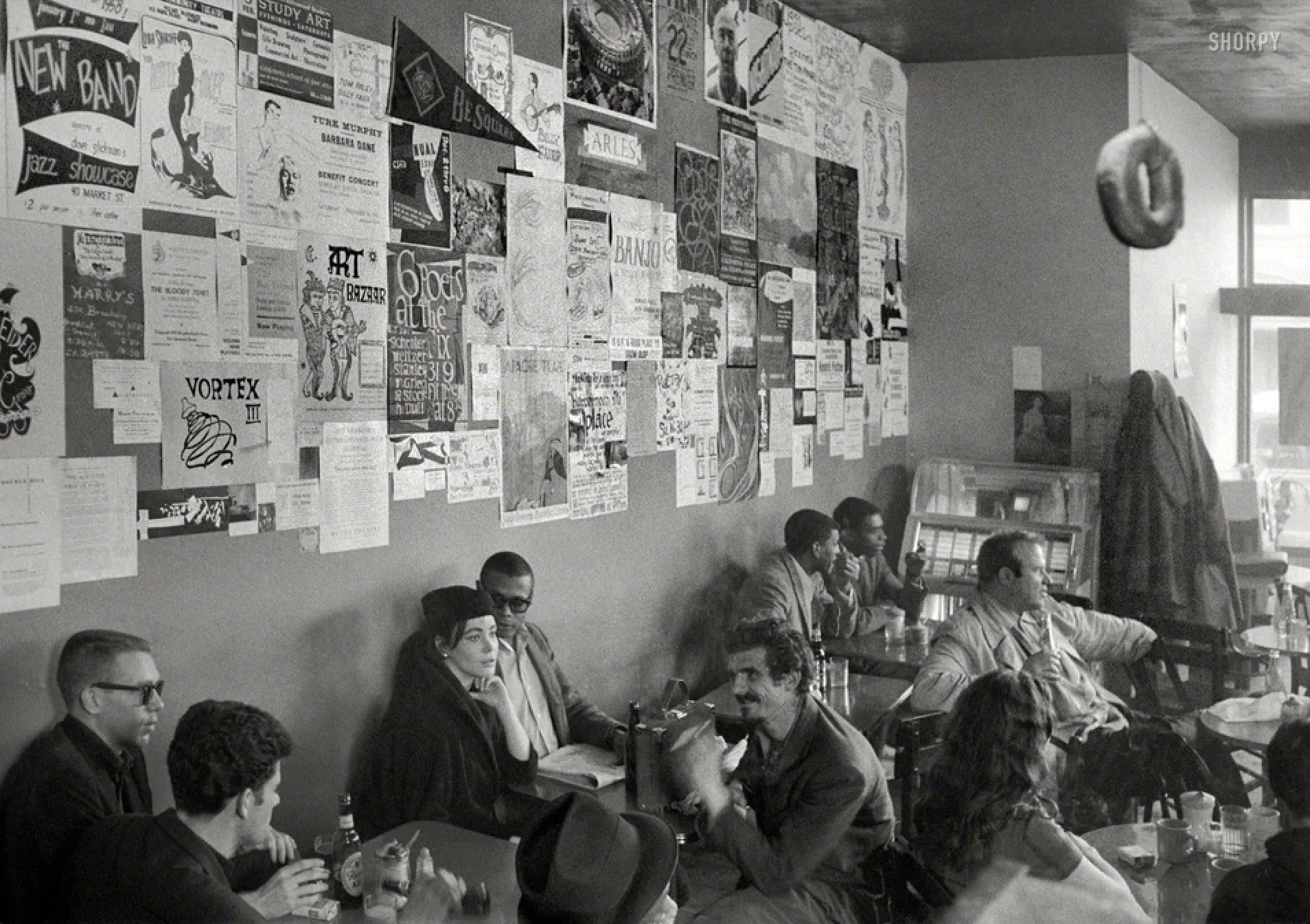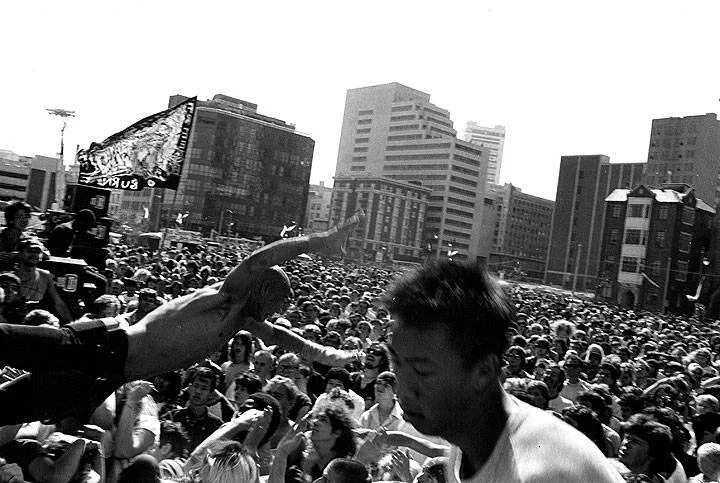A Journey Through the History of Music in San Francisco
San Francisco, with its iconic Golden Gate Bridge and rich cultural heritage, has been a hub of creativity and artistic expression for decades. It’s storied history tied to it’s diverse population and landmark socio-political movements has fueled one of the city’s most vibrant aspects: it’s live music scene. San Francisco has historically been described as a “breeding ground for counterculture”— from the psychedelic sounds of the 1960s to the diverse genres celebrated today, the history of live music in San Francisco is a tapestry woven with passion, rebellion, and artistic innovation.
To better understand how music has been lived and experienced by San Franciscans, we’d like to take a look at the city’s history of music eras, generational moments, and groundbreaking celebrations of music. This isn’t an exhaustive list— so if there’s a piece in time you’d like us to capture, reach out! We’d love to talk about it.
Beats, Beatniks, and Jazz (1950s)
The roots of San Francisco's live music scene can be traced back to the Beat Generation of the 40s and the Beatnik era of the 1950s. Coffeehouses like the Hungry i became gathering places for poets, musicians, and intellectuals, setting the stage for the counterculture movement that would later define the city's identity.
This decade also saw the rise of jazz and blues clubs that were the stomping grounds of exemplary African-American musicians. Musicians from all across the country came to play at these clubs— from Miles Davis to John Coltrane.
During this time, you could describe San Francisco as straight-laced— strict and unassuming— but if you knew where to find your pocket of freedom— you’d be exposed to an underground culture that was invisible to the average city resident.
The Summer of Love (1960s)
The 1960s saw the emergence of the iconic Haight-Ashbury district as the epicenter of the counterculture movement. Pure, quickly-moving, and psychedelic— The Summer of Love in 1967 brought together thousands of free-spirited individuals, and live music became the heartbeat of the social revolution.
Legendary venues like the Fillmore Auditorium and Avalon Ballroom hosted performances by artists such as Jefferson Airplane, Grateful Dead, and Janis Joplin, solidifying San Francisco's reputation as a breeding ground for musical experimentation.
This decade saw an explosion of hippie-culture with the city— where thousands upon thousands of young Americans from across the country flocked to the streets to attend iconic festivals like The Trips (1966) and San Francisco Pop Fest (1968).
Punk and New Wave (1970s-1980s)
As the counterculture movement evolved, so did the music scene.
The 1970s and 1980s brought the rise of punk and new wave, with venues like Mabuhay Gardens and The Deaf Club becoming incubators for groundbreaking acts like Dead Kennedys and the Talking Heads. In an interview with Mother Jones, SF punk icon & photo-visual artist Ruby Ray describes the punk wave as, “..very of the moment. They [San Franciscan Punks] were intelligent people, having fun, pushing the edges, being creative. They didn’t worry about making money or being accepted or getting played on the radio. That wasn’t even an option.”
San Francisco's music landscape diversified, reflecting the city's eclectic and open-minded spirit. You might also recognize this era as the debut of iconic music festival Burning Man, right down on Baker Beach.
The Tech Boom and Beyond (1990s-Present)
Photo by Douglas Zimmerman for SF Gate. Aug 2023
The late 20th century and early 21st century brought new challenges and opportunities for San Francisco's live music scene. The dot-com boom transformed the city's landscape, leading to the closure of some beloved venues. However, new spaces like The Independent and Great American Music Hall emerged, catering to a wide range of musical tastes. Today, San Francisco continues to be a melting pot of musical genres, with venues like Bottom of the Hill, The Fillmore, and The Warfield hosting performances that span from indie rock to electronic and hip-hop.
The history of live music in San Francisco is a tale of resilience, creativity, and cultural evolution. From the coffeehouses of the Beatnik era to the pulsating energy of the Summer of Love and the diverse sounds of today, the city's music scene has remained a vital force, reflecting the spirit of its inhabitants. As new generations of artists continue to shape the sonic landscape, San Francisco's live music legacy persists as a testament to the enduring power of artistic expression in the City by the Bay.




